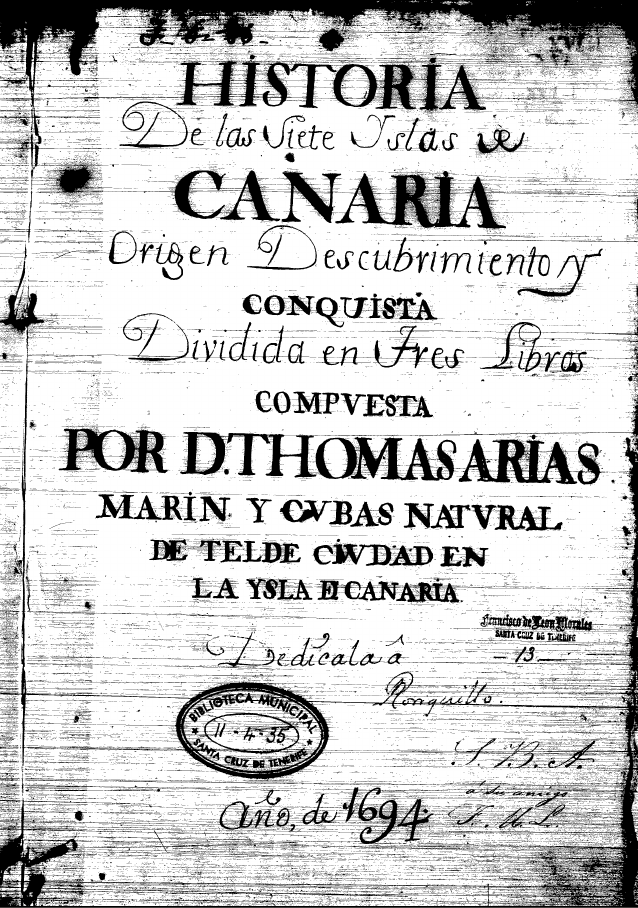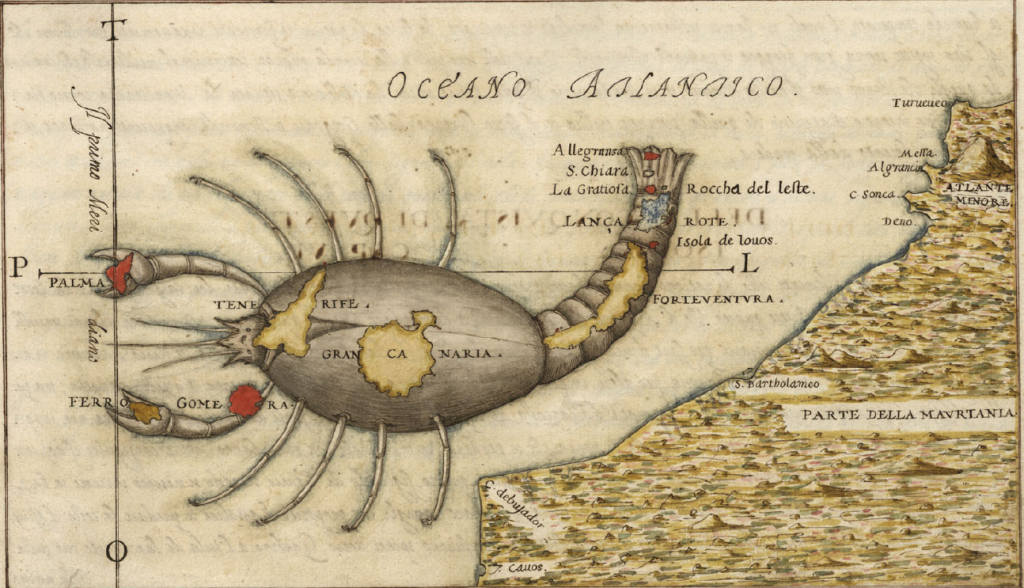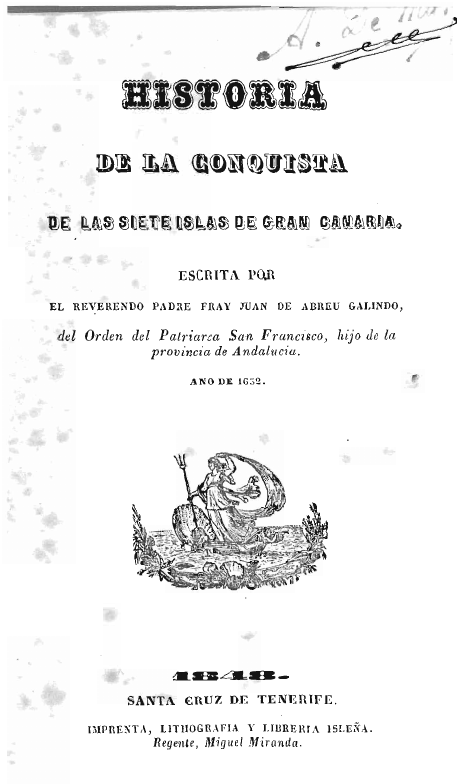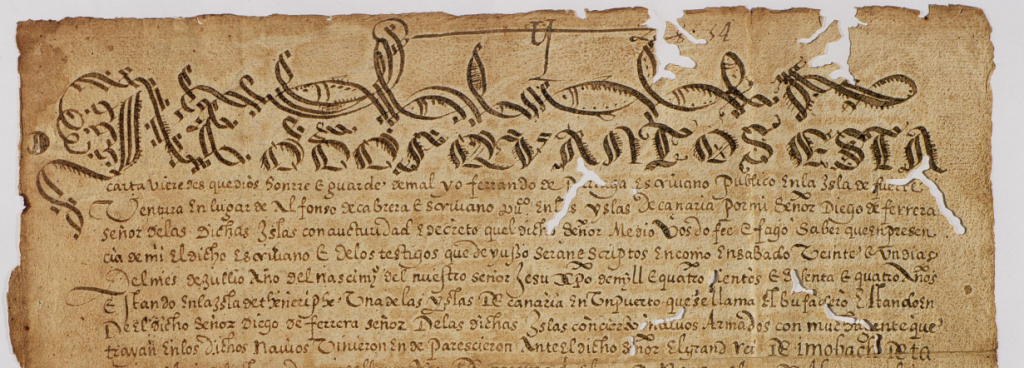The Essentials (V): History of the Seven Ysles of Canaria

Microfilm image of the title page of the oldest surviving copy –18th century– of Historia de las Siete Yslas de Canaria (1694) by Tomás Marín de Cubas (source: Biblioteca Municipal Central de Santa Cruz de Tenerife, Ancient Collection, catalogue number Ms. 192)
UPDATED POST (2021/08/13)
[…] History by Marín de Cubas, when critically read, therefore constitutes a solid foundation for the knowledge of the prehispanic past of the Canary Islands.
Preface by Professor Juan Régulo Pérez for the 1986 edition of Historia de las siete islas de Canaria[1]ARIAS (1986), p. 28.. This translation by PROYECTO TARHA.
Despite its limited spreading, we are facing what is probably the most important surviving work on the world of the ancient Canarians, right after the work by Brother Juan de Abreu Galindo, even surpassing the latter regarding some key aspects.
Written by Dr. Tomás Marín de Cubas –or Marín y Cubas– (Telde, Gran Canaria, 1643 – Real de Las Palmas, Gran Canaria, 1704), who also holds the merit of being the collator of the oldest known copies of the accounts by Antonio Sedeño and Gómez Escudero, History of the Seven Ysles of Canaria is a work that never ceases to amaze researchers approaching to its pages for this opus provides us with interesting, previously unpublished data on the indigenes and some vivid accounts of known episodes of the Conquest showing that its author had access to information aside that in the other surviving writings dealing with the topic.



